- Blog
- Why Buying Email Lists Is A Bad Idea (And How to Collect Email Addresses Fast & Free)
Why Buying Email Lists Is A Bad Idea (And How to Collect Email Addresses Fast & Free)
-
Nikolett Lorincz
- Marketing
- 6 min read
Table of Contents
Are you tempted to buy email list to jumpstart your marketing campaign? It might seem like a quick fix, but buying email lists can lead to more headaches than benefits.
In this article, we’ll explore why purchasing email lists is a bad idea and how it can harm your business.
But don’t worry, we’ve got you covered. We’ll also share effective strategies to collect email addresses quickly and for free. These methods will help you build genuine, engaged opt-in email lists that are interested in your products or services.
Let’s dive in!
Is it legal to purchase email lists?
First of all, let’s look at one of the most common questions when it comes to buying an email list of potential leads.
Of course, the laws governing digital marketing will vary based on where you’re located, but we can give you some general rules of thumb.
In the US (and most other jurisdictions), there’s no law against buying email lists, so in general, you’re free to buy email list if you wish.
However, in most countries, actually using purchased lists to send marketing messages to potential customers is illegal.
That’s because there are laws that require all recipients of marketing emails to have completed an opt-in form. This prevents consumers from receiving unwanted marketing emails.
7 reasons why you should never buy email lists
Now that we’ve looked at the legality of buying email marketing lists, let’s look at the 7 reasons why you should avoid buying them.
1. Email lists for sale are never accurate enough
When you create an email marketing campaign, you’re not trying to reach just anyone. Usually, you’ll have a specific target audience in mind. That’s why a purchased list will never cover your needs effectively.
It’s true that you can buy email lists that are filtered by general demographic characteristics such as location, age, gender, and sometimes even company, position, or revenue.
However, you don’t know the most important thing: are the people on the mailing list you’ve just purchased actually interested in your products or services? Does your product solve their problem?
When you send emails that don’t have relevant content for the people receiving them, you’ll see a dramatic decrease in your ROI.
2. You risk a GDPR violation
Violating the law is obviously not a good decision. It’s even worse when thousands of people have proof that you’ve violated their privacy in their email inboxes.
The GDPR (General Data Protection Regulation) defends European people from spammy activity in their inboxes, feeds, mobile phones, etc. Even if your company isn’t based in Europe, you can still be on the hook for violating GDPR if you send emails to Europeans without their consent.
The U.S. has the CAN-SPAM Act which prohibits you from spamming people who opt out of your emails. It also prohibits you from sending emails without identifying information that clearly communicates who the email campaigns are coming from.
So, the main problem with your purchased email contacts is simply that it’s illegal to actually put them to use. You can buy contact details, but as soon as you start using them, you’ll be breaking the law.
In many places, it’s also illegal to use purchased email lists for your Facebook ad targeting.
3. People will mark you as spam
If you’re constantly sending email marketing campaigns to users who did not opt in to receive them, people will both unsubscribe and start to mark your emails as spam.
This means that you have to be careful: when someone unsubscribes, you need to make sure to take them off your email list. If you don’t, you can get in legal trouble, again.
And you can inadvertently re-add a consumer who has already unsubscribed if they’re included in further mailing lists that you buy!
4. Your email automatization software can penalize you
Email service providers like Mailchimp and AWeber keep a close eye on spam complaints. When recipients mark your emails as spam, these providers take notice.
High spam complaint rates can lead to serious consequences. Your account might be disabled, leaving you unable to send any emails at all. Worse, you could be fined or face legal action for violating their terms and conditions.
To avoid these pitfalls, familiarize yourself with what your email service provider considers prohibited actions. Following the rules will help keep your account in good standing and your emails reaching their intended audience.
5. If you can buy it, others can buy it
When you buy an email list, you’re not the only one with access to those personal email addresses. Other businesses, potentially including your competitors, can purchase the same list.
This means that the recipients on that list are likely being bombarded with emails from multiple sources.
As a result, these individuals may become overwhelmed with the sheer volume of unsolicited emails flooding their inboxes. They’re not only more likely to ignore or delete these emails, but they might also mark them as spam. This can hurt your sender reputation and reduce the chances of your emails being seen.
Some people on the list may take more drastic measures. Tired of the constant barrage, they might delete their email accounts altogether or create new ones, abandoning their old email addresses.
This makes the email list you purchased even less valuable, as many of the email addresses could become inactive or abandoned and it’s not up-to-date data.
6. Buying email addresses harms your reputation
Bad customer reviews and legal trouble can do a lot of harm to your brand reputation.
Angry email recipients can attack your comment section and leave bad ratings about your services, and they may threaten legal action, too. This can prevent new customers from trusting you and choosing to purchase from you.
If you want to generate positive comments and 5-star ratings, you need to send relevant content to potential buyers who have actually chosen to join your email list.
When you buy an email list in an attempt to build brand awareness, it’ll backfire because you’ll only generate negative awareness.
7. Top-quality leads aren’t for sale
Email lists are mass products. That means that you’ll never find purchased lists that have the same open rates as built email lists.
It’s not like these mailing lists were composed by a human with knowledge of your business. They’re simply scrapped together from all the emails posted on social media pages and other platforms.
If you’re serious about using email marketing to grow your business, you want quality leads.
How to build your own high-quality email list for free?
When you build your own list, you’ll be able to communicate directly with an audience that’s happy and excited to receive emails from you. This will allow you to send effective marketing campaigns that actually convert.
In this section, we’ll share some essential tips for building an opt-in email list from your website visitors.
1. Give a good reason for website visitors to subscribe
Whether you’re running an email list building campaign on your homepage or a dedicated landing page, you need to give your website visitors a reason to subscribe.
Online shoppers don’t want to give away their email addresses if they aren’t getting anything in return.
What counts as a good reason?
The best way to convince customers to complete a sign-up form is by offering them something valuable (a lead magnet).
That value could be monetary, such as a discount coupon or buy one get one free offer, or it could be a non-monetary benefit like an ebook or cheat sheet.
In general, you’ll gather more email addresses when the benefits you’re promising are only available to your subscribers.
2. Promote your lead magnet on your website
Once you’ve decided on a great lead magnet, it’s time to promote it.
First of all, you should make sure that your lead generation form is embedded into your website. You don’t want to take up the valuable real estate that’s above the fold, but you don’t want to bury it all the way in your website’s footer, either.
Placing it strategically will enhance your lead generation efforts by making it easily accessible to potential clients.
Make sure that you’re also promoting your list in your blog posts, so that you can turn organic search visitors into new customers.
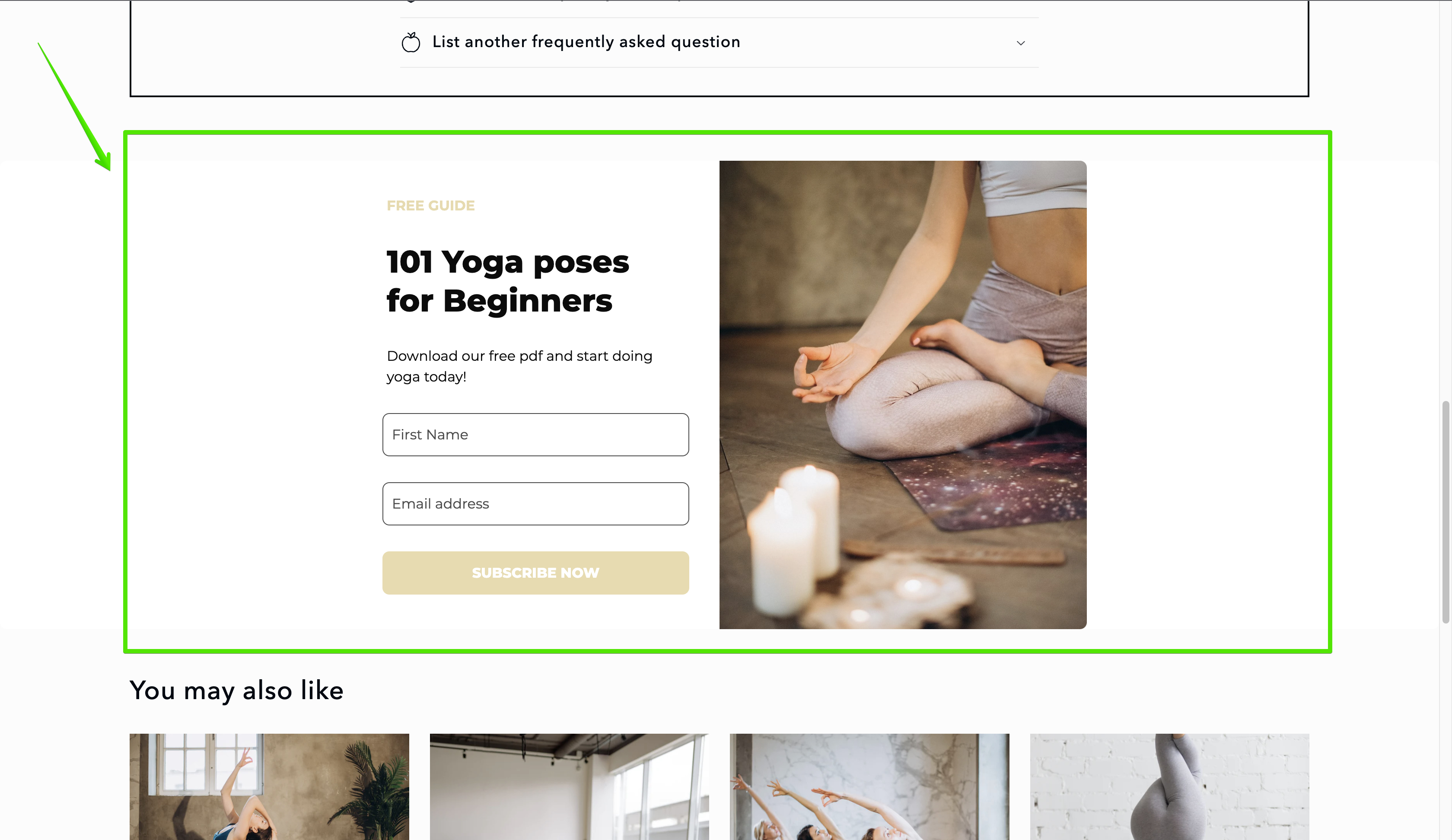
Lead generation popups are another vital way to gather consumer emails on your website.
Popups are more attention-grabbing than embedded content, so you can be sure that people will at least see and consider your offer.
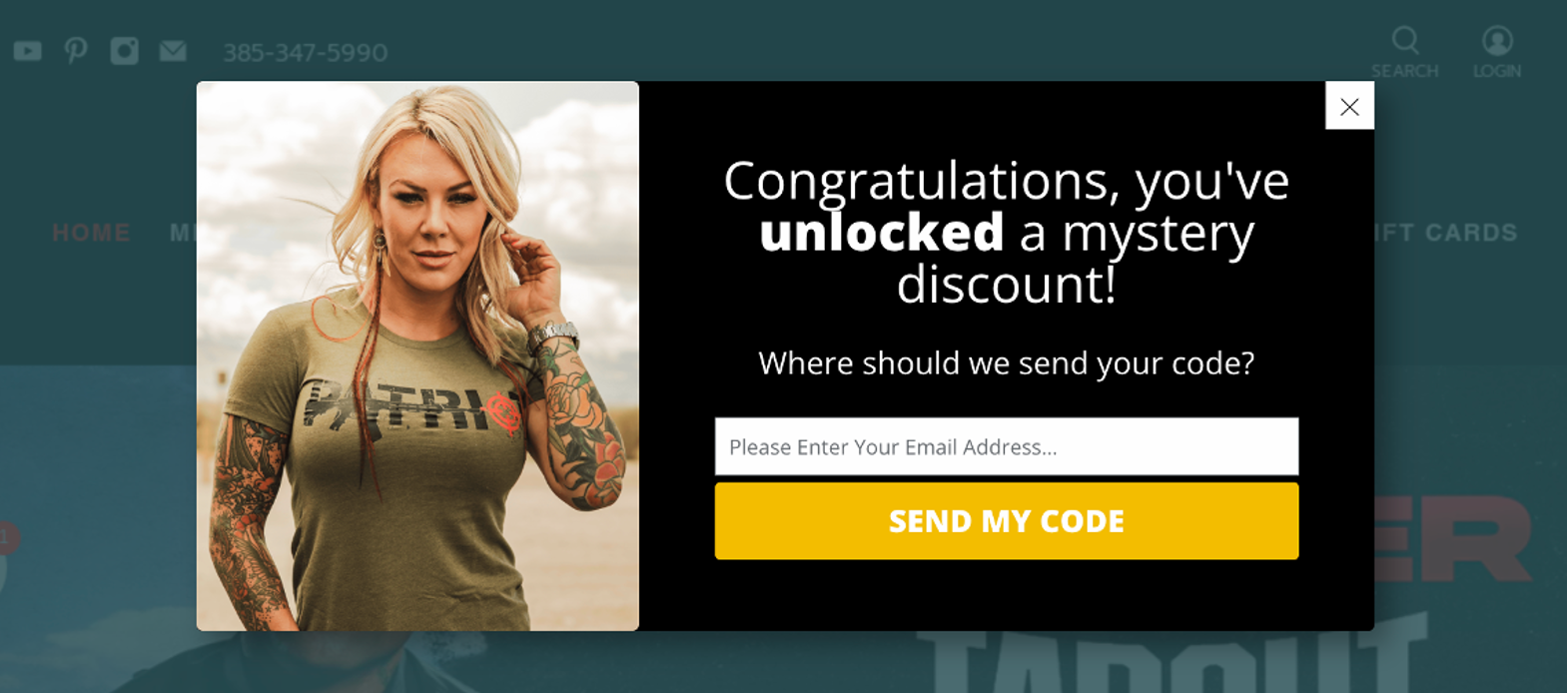
You can get started with one of these list building popup templates in just a few minutes:
Using your social media channels is another great way to encourage your followers to join your mailing list. Posts on social media have a lot of reach, so use them to your advantage!
Finally, you can also use paid ads to drive users to a lead generation landing page.
3. Segment your email list
Segmenting your email list is a powerful way to personalize your email marketing campaigns. Instead of sending your customers irrelevant emails that never get opened, you can target the needs and interests of specific groups of customers.
This is something you’ll never be able to do if you buy email lists, since you won’t know anything about those contacts.
If you want to segment your email list, you’re going to have to collect more information than just your visitors’ emails. Knowing things like whether someone identifies as a man or a woman, or what type of products they’re interested in, will allow you to place them in the correct segment.
Here’s a lead generation campaign that collects both email addresses and data about potential customers that can be used for personalization:
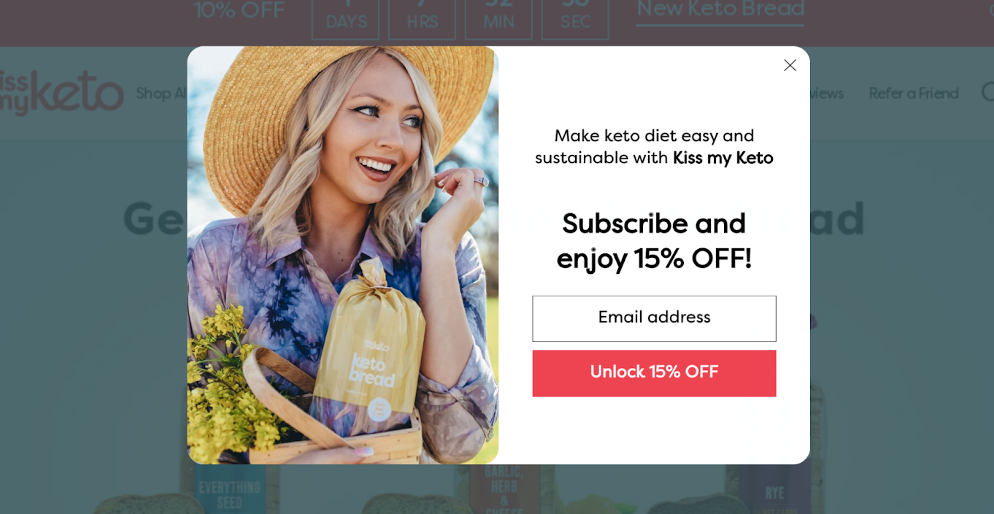
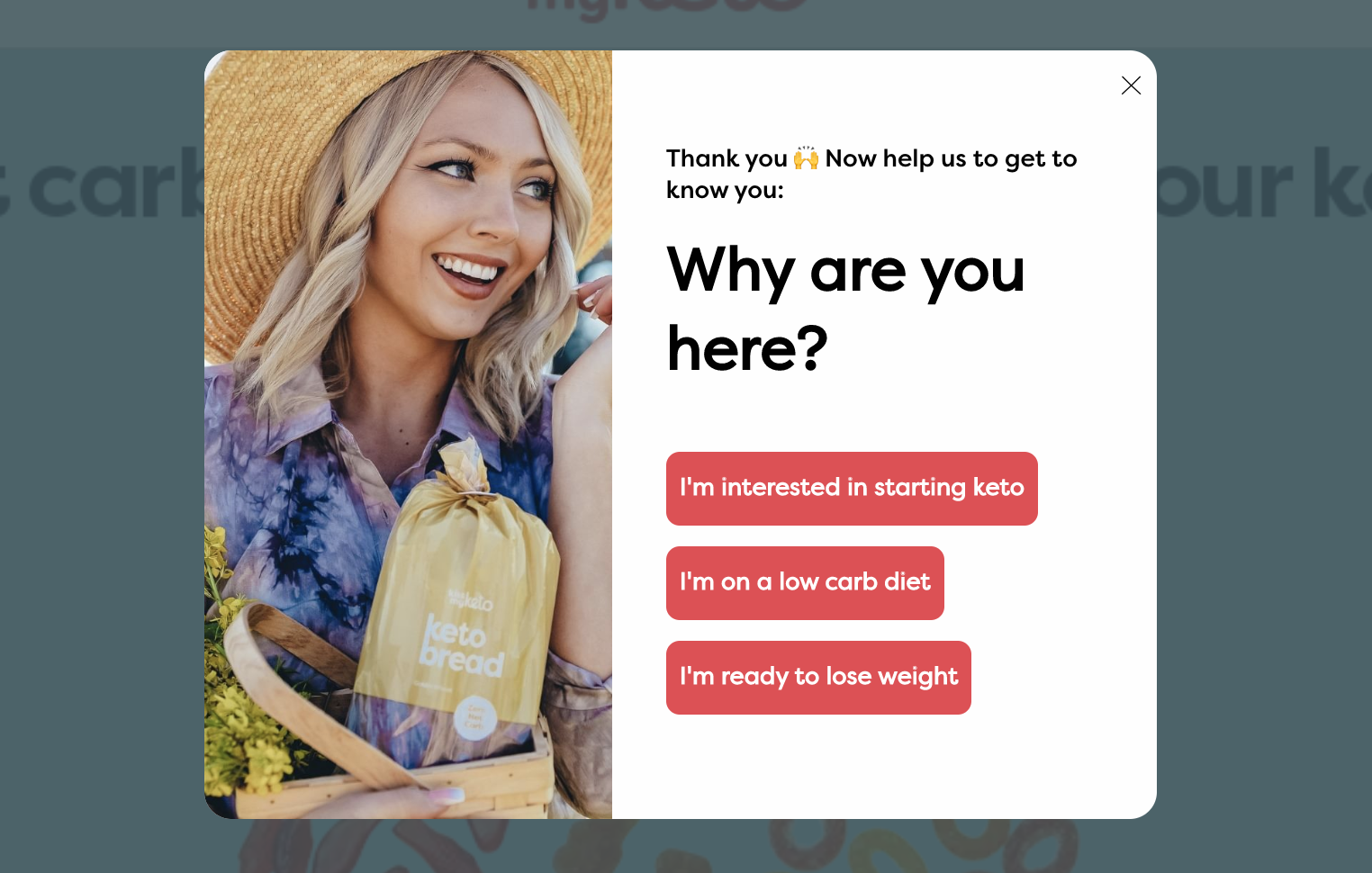
If you wanna get started with segmenting your opt-in email addresses, try these popup templates:
4. A/B test your marketing messages to get the best results
When you’re trying to build an email list, it can be difficult to know exactly which offers, campaign types, and design choices will lead to the best results.
That’s why A/B testing is essential to building email lists. With an optimized lead generation campaign, you’ll be able to gather as many email addresses as possible.
5. Personalize your messages for your target audience
If you’ve successfully gone through the first 4 steps, it’s time to take your list building strategy to the next level by using personalized opt-in forms. Personalized lead generation campaigns allow you to grow your email list even faster with more compelling messaging.
For starters, you can personalize based on interest. This is a good idea if your paid ads let you know which types of products your visitors are interested in.
For example, you could show the campaign below to users who clicked on an ad about weight loss:
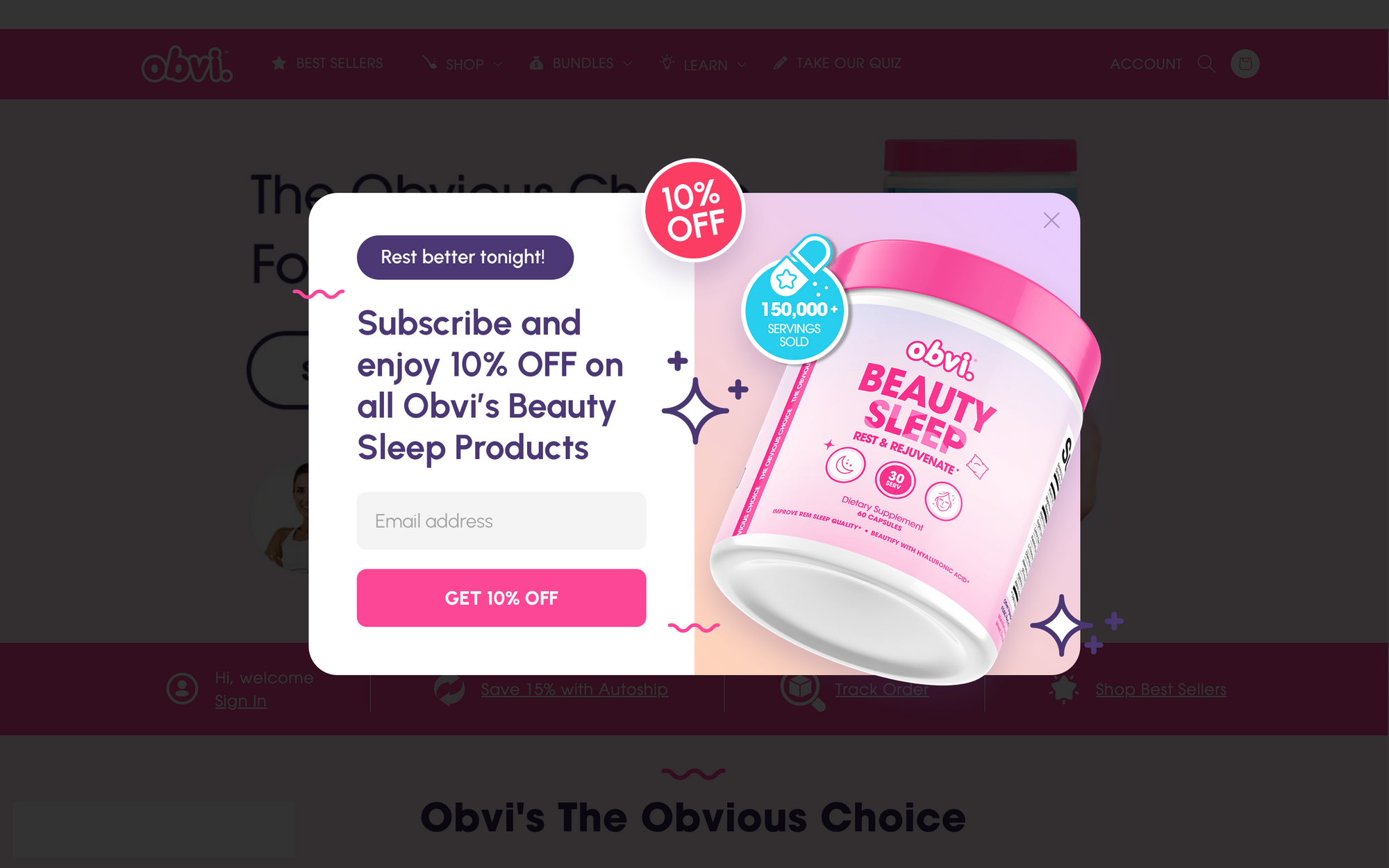
You can also use your visitor’s location data to personalize your messages to them.
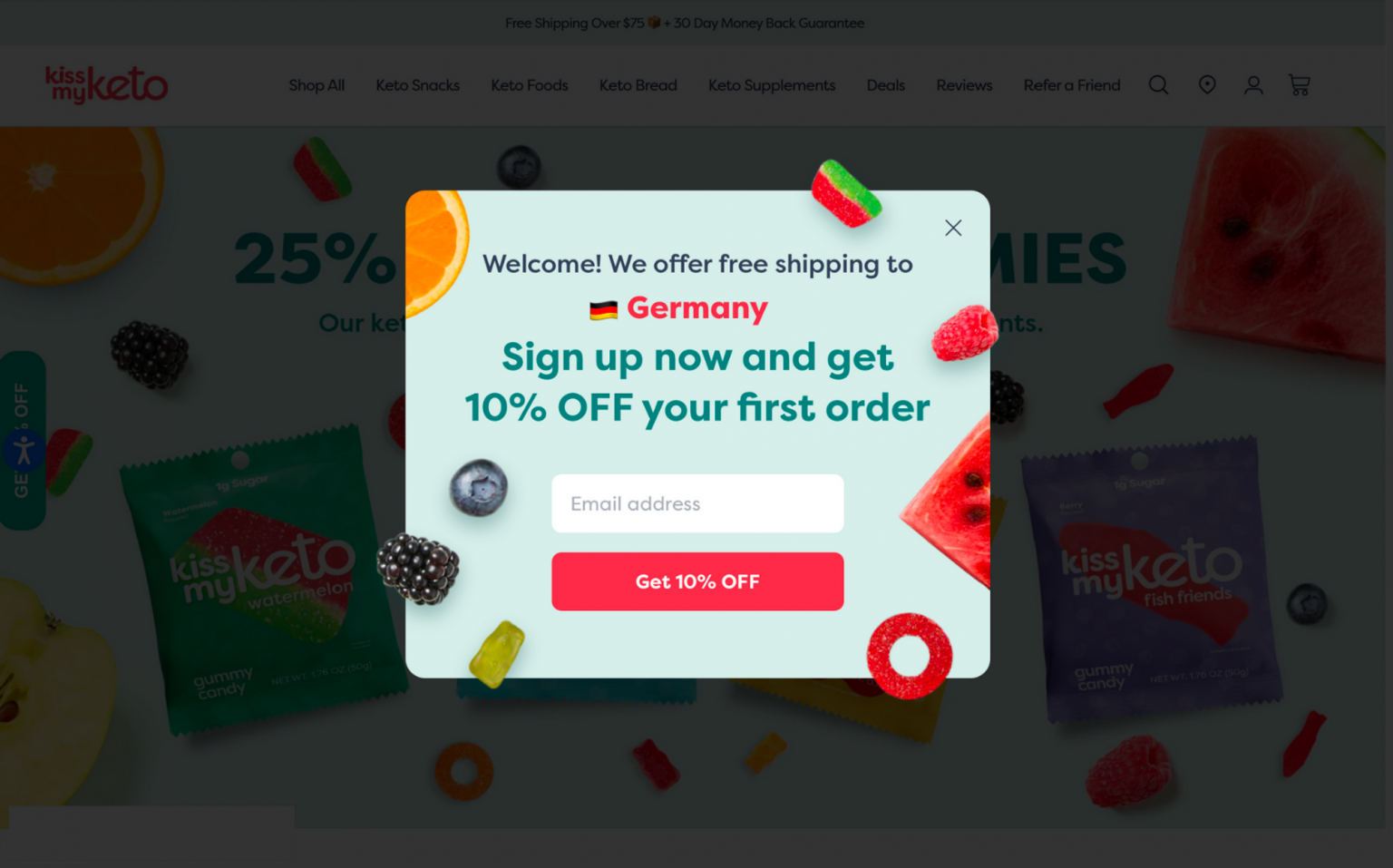
Another way to personalize your opt-in email list building campaigns is by mentioning where the visitor came from (based on traffic source), like below.
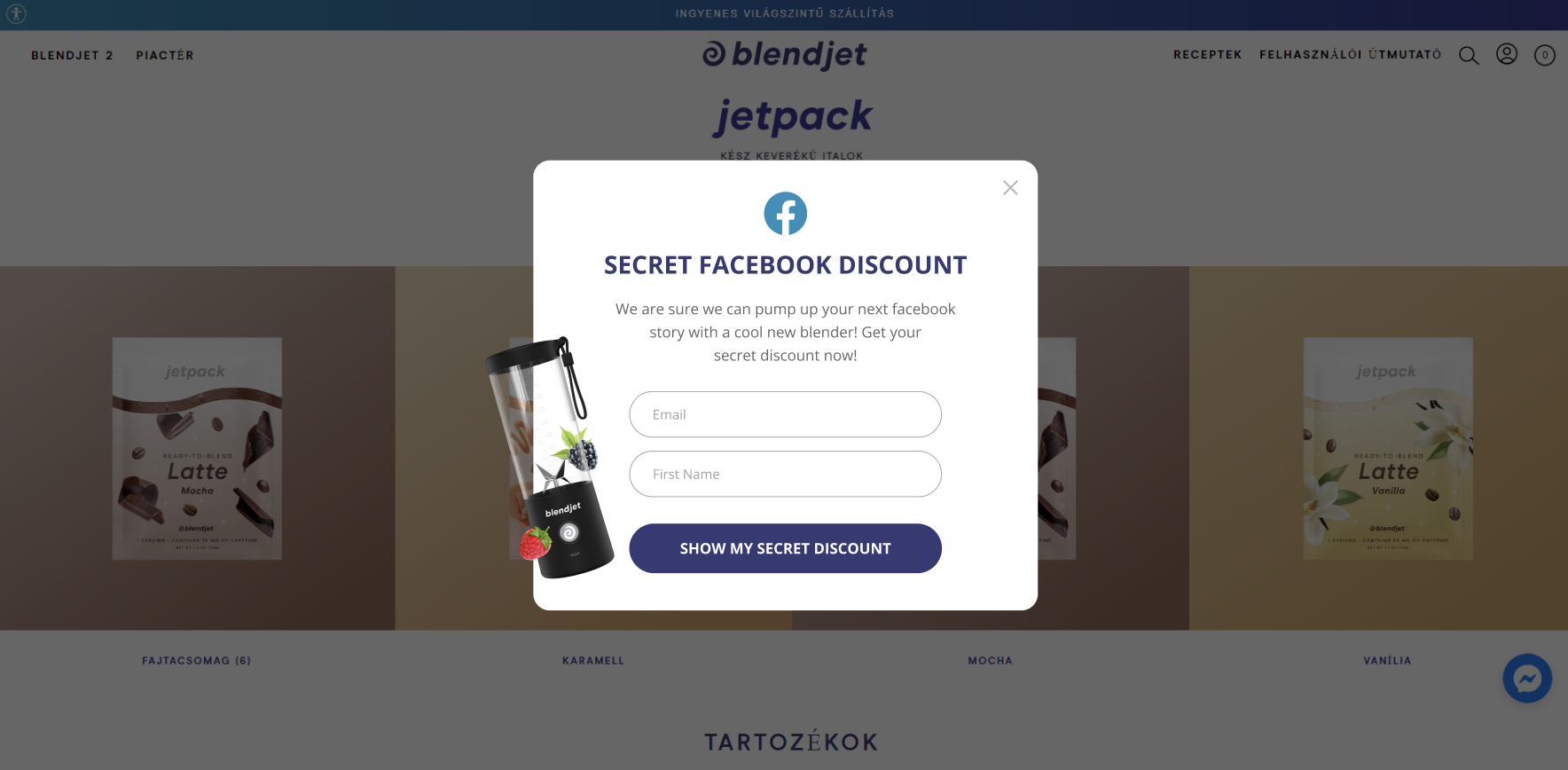
There are many other ways to use personalization— check out the article below for more detail on building an email list quickly.
Recommended reading: How to Build an Email List Quickly: 18 Winning Strategies
What tools do you need to grow an email marketing list?
To reach your email marketing goals, you may need a boost from some useful tools that make building an email list quicker and easier:
- Lead generation tool/popup tool: A lead generation tool like a popup software can help you create efficient opt-in forms and increase your conversion rates. Here are the 10 best popup software to boost conversions in 2024.
- Email service providers: You’ll need an email provider such as MailChimp or Klaviyo to send thousands of emails with a single click and manage your subscribers.
- Website personalization: Relevancy is key when it comes to list building. A website personalization tool will help you grow your list faster.
What about selling email addresses?
Now you’ve built a high-quality list with lots of users who are happy to receive emails from you. There’s a lot of value in that, which raises the question: do you want to sell your email list to another business owner?
If you have a great list, it’s best to only use it for yourself. To make it pay off, aim for campaigns that have a high ROI and generate lots of revenue from your email marketing list.
Plus, selling your list would compromise your subscribers’ privacy and your integrity. Not worth it! In short, don’t sell your email lists to your competition.
The only exception is when you’re exiting a business. But in that case, you’re not just selling your list of contacts, you’re selling the whole business.
Wrapping up
Hopefully you now have a better understanding of the pitfalls of using purchased email lists.
As an online business, a list of contacts that aren’t interested in your brand just won’t cut it. Instead of watching your emails bounce and dealing with legal trouble, it’s better to build your own email list and invest in long-term growth.
When it comes to building an email list, you need the right tools. And there’s no better lead generation software than OptiMonk, which allows you to grow your list with its powerful personalization features, beautiful pre-built templates, and robust A/B testing capabilities.
If you haven’t created a free account yet, make yours today!
For further list building techniques, give this video a watch:
Migration has never been easier
We made switching a no-brainer with our free, white-glove onboarding service so you can get started in the blink of an eye.

What should you do next?
Thanks for reading till the end. Here are 4 ways we can help you grow your business:
Boost conversions with proven use cases
Explore our Use Case Library, filled with actionable personalization examples and step-by-step guides to unlock your website's full potential. Check out Use Case Library
Create a free OptiMonk account
Create a free OptiMonk account and easily get started with popups and conversion rate optimization. Get OptiMonk free
Get advice from a CRO expert
Schedule a personalized discovery call with one of our experts to explore how OptiMonk can help you grow your business. Book a demo
Join our weekly newsletter
Real CRO insights & marketing tips. No fluff. Straight to your inbox. Subscribe now
Nikolett Lorincz
- Posted in
- Marketing
Partner with us
- © OptiMonk. All rights reserved!
- Terms of Use
- Privacy Policy
- Cookie Policy
Product updates: January Release 2025








